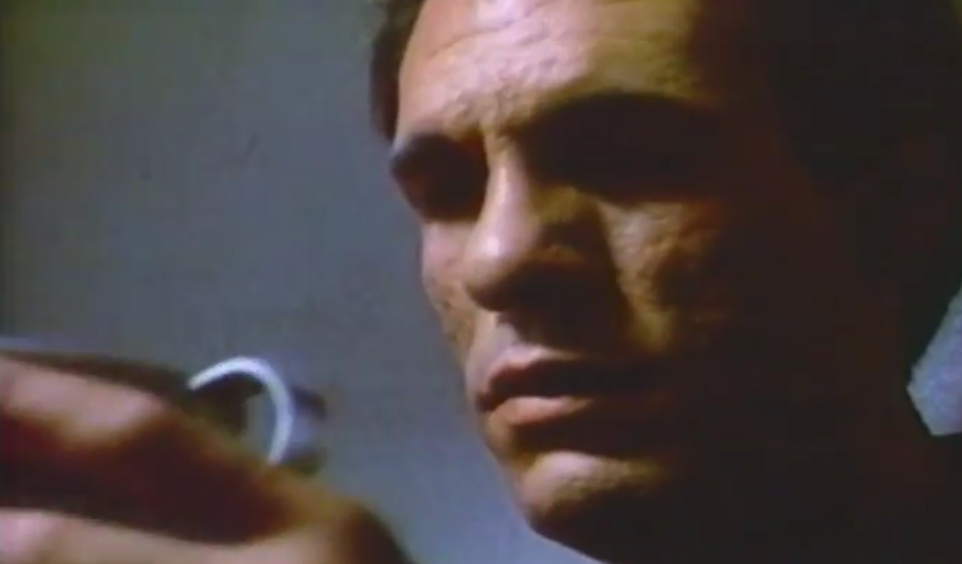This is very important. We cannot blame the all racism in America on the every day perpetrators without realizing it is codified in our psyche by those whose information we consume. The real evil is in those who should know better.
BY JACK SHAHEEN – January 1, 1998
Jack Shaheen (1935-2017). Photo: Al Jazeera
It is ironic that as Palestinians in the occupied West Bank and Gaza Strip are being beaten, arrested and killed, CBS TV chose to portray a Palestinian as a terrorist and not as a victim of terror.
he recent CBS special (1/10/88) Terrorist on Trial: The United States vs. Salim Ajami perpetuates the media myth: Palestinian = Terrorist. Ajami, the Palestinian protagonist of this fantasy drama, is captured in West Beirut by a US military team and accused of ordering the violent deaths of Americans abroad. Ajami is cast as the Other, a man threateningly different from us: anti-Western, deceitful and full of hate.
In Terrorist on Trial, US military personnel and government officials call the Palestinian “scum,” “son-of-a-bitch,” “murderer,” “low-life” and “bastard.” Ajami deserves the slurs. He boasts of murdering innocent women and children. He would use nuclear weapons to achieve his goals: “We will strike at them in their home country as well as overseas,” he shouts. “Long live Palestine!”
Most Arabs do not go around committing murder. But after watching flickering screen images, it seems that’s all they do. For decades, negative portraits of Arabs, unbalanced by positive images, have collectively nurtured suspicion and ignorance. The major networks are guilty of inflicting a plague of stereotypical portraits on viewers. “Hollywood is a stubborn child clutching to a Linus blanket when it comes to relinquishing such ragged stereotypes as the Arab who is bloodthirsty,” notes Howard Rosenberg, the TV critic for the Los Angeles Times(1/8/88).
There is no single representative image of Palestinians, just as there is no single representative image of Americans. Yet turn on any TV channel, watch any show from Hunter to The Equalizer, to TV movies such as Hostage Flight and Under Seige, and you’ll see images of sameness: Arabs lumped together with the likes of Hitler’s SS and Attila’s hordes. In motion pictures such as Hostage, Wanted Dead or Alive, Death Before Dishonor, Delta Force and Iron Eagle, terror is personified by screen Arabs who lurk from the shadows, wearing red-and-white-checkered keffiyehs and firing AK-47s.
We all condemn attacks by terrorists. Yet these incidents should be viewed rationally and in context. More than 18,000 murders were committed in the US last year. Does this make us a nation of murderers? Is it fair to tag the Irish, the Germans and the Italians as innately terrorist because of deplorable actions by the Irish Republican Army, the Baader-Meinhoff gang and the Red Brigades? Of course not. Then why do major media perpetuate the ugly myth that brands more than 4 million peace-loving Palestinians as brutal murderers?
Stereotypes do not exist in a vacuum. When producers continually paint a minority or ethnic group as less than human, who benefits? Palestinian caricatures are not harmless escapist fare. History has taught us that such images inform—or “disinform”—the values, ideas and actions of individuals and their governments. Some Reagan officials recently tagged Arabs “sand-niggers.” Most US political leaders refuse to speak out against anti-Arab racism.
The negative stereotypes have a profound effect on both Arabs and Americans of Arab origin. Threats and bomb attacks continue to plague American-Arab organizations and mosques. In 1985, a Palestinian-American, Alex Odeh, an advocate of civil rights, was murdered by extremists in Santa Ana, California. (The murder occurred not long after Odeh lit the menorah at a Chanukah celebration hosted by the New Jewish Agenda.)
What we do not see is often as important—if not more important—than what we do see. We never see Palestinians as victims of terrorism. Nor do we see Palestinians smile—unless they throw bombs. A Palestinian husband is never seen comforting his wife. Mother and child do not sing lullabies. Teenagers do not dance to rock music. We never see a Palestinian walk his dog, teach at a university, program a computer or heal the sick. Today’s Palestinian demon has supplanted the Jewish demon of pre–Nazi Germany. The image of Germany’s Jews, when they appeared as dark and threatening, was intolerable. Yet a similarly deceptive portrait has been transferred to another group of Semites—the Palestinian Arabs.
Screen portrayals are no longer limited to the Asian Fu Manchu, the subservient black, the drunken Irishman, the barbaric Indian and the crazed Vietnam vet. We see such groups in multidimensional roles. Common sense says we should also see humanized portraits of Palestinians. How much longer can the networks afford to be complacently monolithic? Isn’t it time for programmers to retire the stereotype to video Valhalla? It is not so difficult for image-makers to offer sparks of decency that illuminate, rather than darken, our perception of others. Left unchallenged, their lurid myths weaken our ability to understand the world’s mosaic. Palestinians are friendly and honest folk, common to the human species. To continue the status quo will deepen the slide toward tragedy.
Jack Shaheen was an award winning-media critic and professor of mass communications at Southern Illinois University-Edwardsville. Shaheen also authored the books The TV Arab, Reel Bad Arabs: How Hollywood Vilifies a People (made into a documentary) and Guilty: Hollywood’s Verdict on Arabs after 9/11).

